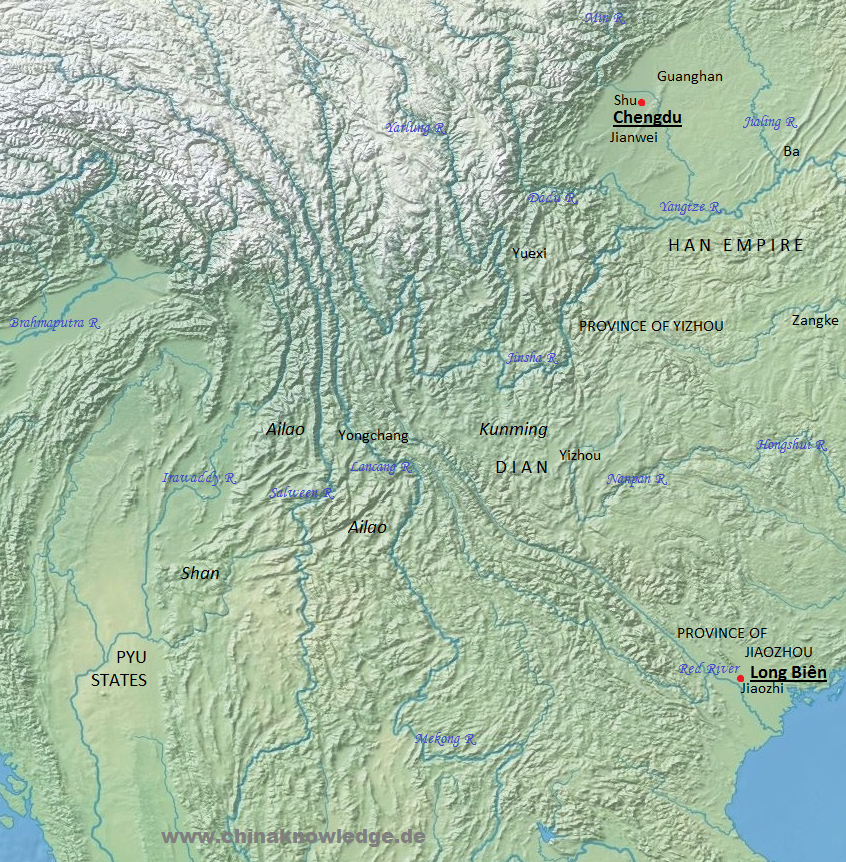Dian 滇 was a non-Chinese kingdom in the region of modern Yunnan. It flourished during the Han period 漢 (206 BCE-220 CE). The earliest archaeological traces of Dian date from the late Spring and Autumn period 春秋 (770-5th cent. BCE), and it was only until the 1st century CE iron tools were more widespread. The cultural relics of Dian are on the one side influenced by the bronze tools of the regional states of China proper, and on the other side show connections to the bronze cultures of northern Vietnam. The cultural centre of the kingdom of around Lake Dian 滇池.
Bronze figurines show that males used to knot their heir, while females used to wear their hair open. Adornments and clothes were different from that of the Chinese. The people of Dian engaged in agriculture and cattle breeding, but also fishing and hunting. They did apparently not yet know to plough the fields but used hoes instead. The craftsmen of Dian produced bronze objects, gold and silver objects and polished stones.
 |
Southwest China and its surroundings between c. 200 BCE and 200 CE. Based on Tan Qixiang 譚其驤, ed. (1995), Zhongguo lishi ditu ji 中國歷史地圖集, Vol. 2, Qin, Xihan, Donghan shiqi 秦西漢東漢時期 (Beijing: Zhongguo ditu chubanshe, 1996). Tribes in italics, commanderies in normal letters. |
The history Shiji 史記 says that King Zhuang of Chu 楚莊王 (r. 614-591) once undertook a military campaign against Chu. Under the empire of Qin 秦 (221-206 BC), the region of Dian remained practically untouched. It was only under the reign of Emperor Wu 漢武帝 (r. 141-87 BCE) of the Han dynasty that Zhang Qian 張騫, after his conquest of the Western Territories 西域, suggested exploring the southwest in order to find a way to India 身毒 and the Tokharians 月氏. In 122 BCE Wang Ranyu 王然于, Bai Shichang 柏始昌 and Lü Yueren 呂越人 were sent out to find out more about the geography in the southwest. They were welcomed by the king of Dian but could not proceed farther to the west because the tribes of the Kunming 昆明 denied them to pass. The king of Dian, supported by the local nobility, also refused to accept the suzerainty of the Han empire and to pay tributes.
In 109 therefore, Emperor Wu sent out an army that forced the king of Dian to submit. From then on the region of Dian was integrated into the province of Yizhou 益州 as commandery of Yijun 益郡. The king of Dian was bestowed an imperial seal as native ruler of Dian and was so allowed to remain in his position.
Such a seal was discovered in 1956 in the tomb of a king of Dian. A lot of merchandise objects and money from Han China has also been excavated in tombs of the Dian kingdom. It vanished at the end of the 2nd century CE.